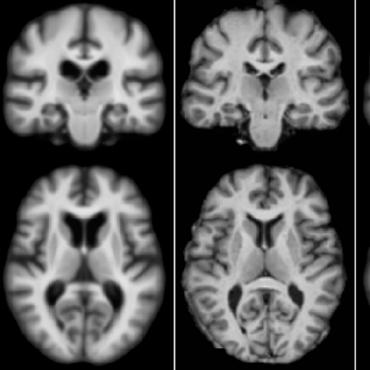Diffeomorphic registration with intensity transformation and missing data: Application to 3D digital pathology of Alzheimer’s disease
This paper examines the problem of diffeomorphic image mapping in the presence of differing image intensity profiles and missing data. Our motivation comes from the problem of aligning 3D brain MRI with 100 micron isotropic resolution, to histology sections with 1 micron in plane resolution. Multiple stains, as well as damaged, folded, or missing tissue are common in this situation. We overcome these challenges by introducing two new concepts. Cross modality image matching is achieved by jointly estimating polynomial transformations of the atlas intensity, together with pose and deformation parameters. Missing data is accommodated via a multiple atlas selection procedure where several atlases may be of homogeneous intensity and correspond to “background” or “artifact”. The two concepts are combined within an Expectation Maximization algorithm, where atlas selection posteriors and deformation parameters are updated iteratively, and polynomial coefficients are computed in closed form. We show results for 3D reconstruction of digital pathology and MRI in standard atlas coordinates. In conjunction with convolutional neural networks, we quantify the 3D density distribution of tauopathy throughout the medial temporal lobe of an Alzheimer’s disease postmortem specimen. Author summary Our work in Alzheimer’s disease (AD) is attempting to connect histopathology at autopsy and longitudinal clinical magnetic resonance imaging (MRI), combining the strengths of each modality in a common coordinate system. We are bridging this gap by using post mortem high resolution MRI to reconstruct digital pathology in 3D. This image registration problem is challenging because it combines images from different modalities in the presence of missing tissue and artifacts. We overcome this challenge by developing a new registration technique that simultaneously classifies each pixel as “good data” / “missing tissue” / “artifact”, learns a contrast transformation between modalities, and computes deformation parameters. We name this technique “(D)eformable (R)egistration and (I)ntensity (T)ransformation with (M)issing (D)ata”, pronounced as “Dr. It, M.D.”. In conjunction with convolutional neural networks, we use this technique to map the three dimensional distribution of tau tangles in the medial temporal lobe of an AD postmortem specimen.
PDF Abstract



